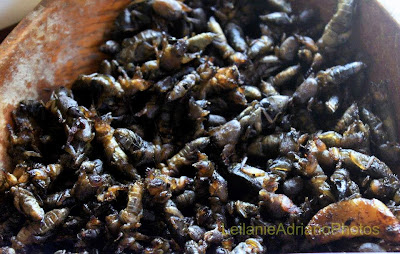 |
| Pinakbet a naganus a bawang. |
Some time before the maturing and uprooting season of garlic in the Ilocos provinces, the
tiendaan or mercado publico (public/local market) is usually abundant with young garlic being sold alongside young onions. Although not as popular as the onion, when it comes to being used as a vegetable (specially raw, with the famous
KBL or
kamatis-bugguong-lasona trio which apparently is the Ilokano salsa of sort), green garlic is preferred by Ilokanos for a kind of aromatic stew called
pinakbet a bawang (actually an
inabraw), cooked in
bugguong, kamatis, ginger just like the way an
Ilokano pinakbet medley is done. A
pinakbet with lots of young garlic is also a staple during green garlic times. A
dinengdeng or inabraw with bits of young garlic bulbs and leaves is equally sumptuous.
Naganus a bawang is also made into a great spicy appetizer called
inartem a bawang--that is, fermented in
suka ti basi (Ilocos cane vinegar) with chili and other spices.
Young garlic is exclusively abundant in the Ilocos, where
bawang is a major crop, especially in the towns of Pasuquin, Pinili, Badoc, Sinait and others. But during the season, young garlic can reach the nearby towns of Cagayan, and even in Tuguegarao City. This young
bawang, fresh from Pasuquin,
I chanced at the vegetable
talipapas along the highway in Nassiping in Gattaran town:
I "cleaned"some from the bundles:
Washed it thoroughly after which and diced it, ready for cooking:
The young
bawang cooking (you boil some water and
bugguong, put in the sliced tomatoes and crushed ginger, and then the
naganus a bawang):
Boil for some time and then simmer. Because this is a
pinakebbet, then it should be a dry stew. You can opt to retain some broth if you prefer, as a kind of "sauce" to your
labay:
And it's done! The leaves will shed its green into a darker shade when fully cooked:
I can't tell you how delicious and aromatic it is, this solo
bawang pinakbet, but with it I didn't mind consuming platefuls of rice to go with. You have to have it, partake it, relish it, enjoy it, to fully know and understand why Ilokanos have acquired quite a taste of it, and proudly so:
Next, my
inartem a bawang.....
:::::


































































